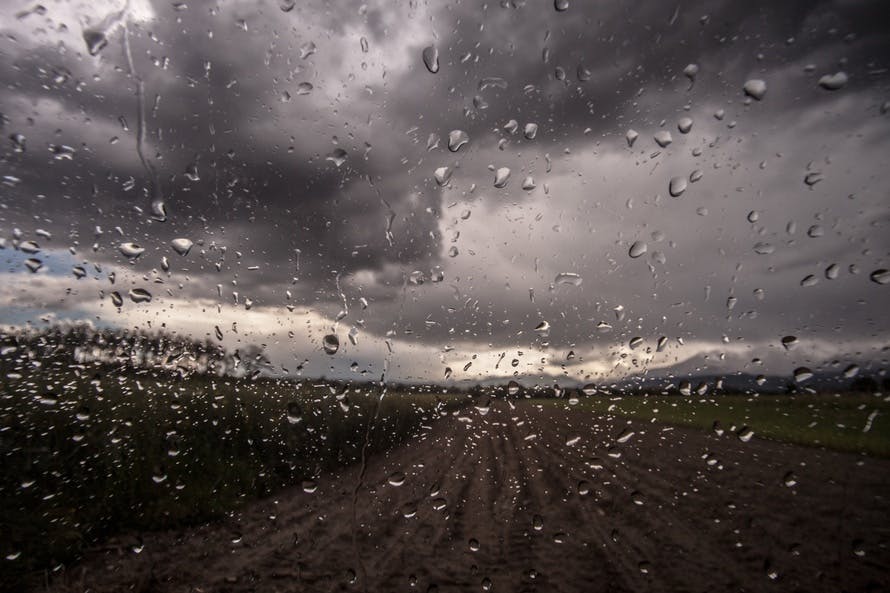
One of the hardest times to find a taxi in busy downtown metropolitan areas, at least in the pre-Uber era, is when it’s raining. Studies conducted in London, NYC and elsewhere have shown that the meaningful uptick in rider demand during inclement weather is not matched by taxi availability. Soggy would-be riders are often forced to stand in the rain for a protracted period before being picked up, assuming that they get a ride at all.
The obvious question is why is this so? Why wouldn’t cabbies be out in droves on days like this, looking to grab as many customers as they can and pad their income?
A number of theories have been advanced to answer this question. One is simple supply and demand. A fleet of taxis cannot exist in an on-demand economy. It has to be built to meet the standard demand in order to be fiscally viable. When demand spikes to unusually high levels there is no place to draw available drivers from.

A second theory is what economists call “income targeting.” This suggests that cab drivers will only work until they hit their earnings target. Once met, they quit for the day, regardless of what additional opportunity awaits them. When there is precipitation and demand surges, it is easier for cabbies to hit their target earlier on in the day, leaving behind many stranded passengers.
A final approach is based on a study published by the National Bureau of Economic Research. The author, Princeton economist Henry S. Farber, cross-referenced weather readings with data on almost one billion taxi trips taken in NYC between 2009 and 2013. Farber claims that cabbies do not earn more during the rain because while demand increases, the income per hour does not.
Rain causes traffic, which slows down the meter. In addition, Farber states the obvious: many cabbies just find it unpleasant to drive in the rain. Nevertheless, others do not agree with Farber’s analysis. They acknowledge that rain is a boon opportunity but drivers either can’t keep up with the demand or target a specific income level and then stop working.

As with cabbies, leaders and businesses deal with their own form of rain, defined here metaphorically as increased demand for products and services. On the one hand, such spikes offer great opportunity; higher demand leads to increased sales and profits. Yet, they don’t always result in the perfect-world trajectory that we may expect.
For starters, there‘s the issue of keeping up with demand. It’s not always so simple to increase production or to quickly find additional talent to bring aboard. There is also a mindset of goal targeting which affects leaders and their teams. Once the target goal has been met, we naturally shift into low gear and perhaps even want to call it a day, so to speak. Lastly, increased demand may be “slowed” by increased “traffic,” such as rising costs.
These could include investments in infrastructure, recruiting, training and the like. For some people all of the extra time and effort needed to service the “new riders” may diminish their enthusiasm and leave business prospects out in the rain.
In order for businesses to respond well to demand hikes, they may wish to consider these strategies:
- Plan ahead – It can be very difficult to look down the road when you have to manage the here and now. Successful leaders know, however, that the status quo is usually not where they want to remain indefinitely. Begin by envisioning a better tomorrow and the changes that such a development will require. Develop an action plan for the future (at least in general terms), including how you may adjust administrative roles and meet staffing demands (such as by maintaining a candidate pool). More about that below.
- Paint a clear picture – Give others a vision to pursue and reasons as to why it’s worthwhile. Use rich, colorful descriptors that help contrast the present from the future.
- Set achievable goals together with stretch goals – The benefits of goal setting are obvious enough. But there can be downsides to setting targets, such as letdown that can follow their achievement. When setting goals include some incentivized stretch goals that are realistic and will motivate your team to keep their foot on the pedal.
- Develop a growth mindset – New opportunity sometimes can be met with unexpected pushback. We are all happy to enjoy added revenue but may not be so willing to go beyond our comfort zones in order to do the heavy lifting necessary to sustain the new level of production. Employers who can develop a learning culture that encourages their people to continually grow beyond their existing skill set will find a team that is more willing to take on new challenges.
- Identify and recruit multi-hat talent – Don’t allow yourself to be boxed in by rigid job descriptions and narrowly defined skill sets. Be willing to rethink your people and their abilities in order to take the organization into its next stage of growth. Find and nurture strong leaders in advance of a demand-driven promotion. Let your creative minds try their hands at different tasks so that they can be ready to step in when needed. Most of your people can do more than you think. Many will also appreciate the freshness that new work provides and the ability to show that they’re not just one-trick ponies.
- Increase accountability – Encourage an attitude that accountability to make things happen lies with everyone. This will help diminish the “well, I did my job” mindset that limits production and increase personal investment in the success of “we.”
Rabbi Naphtali Hoff is an executive coach and President of Impactful Coaching and Consulting. He can be reached at info@impactfulcoaching.com.



















